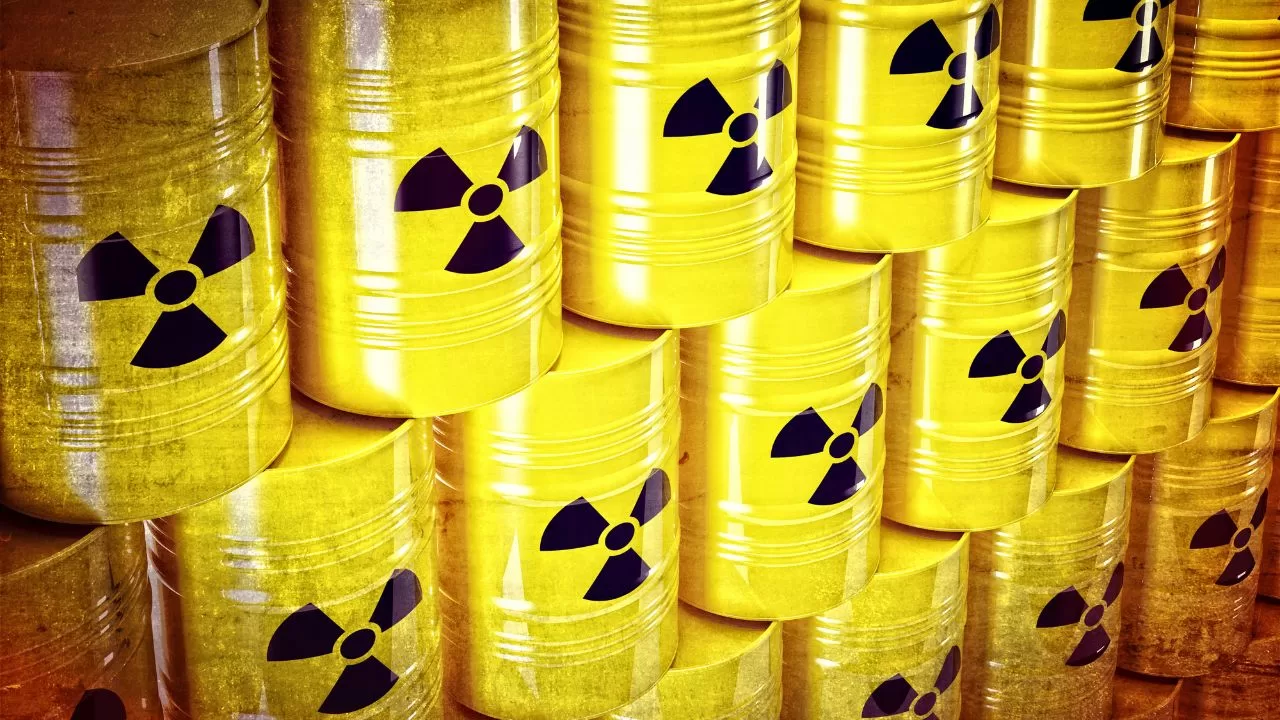Once upon a time, not too long ago, humans harnessed the mighty atom, splitting it open to release vast amounts of energy. This energy was used to build bombs that could wipe out entire cities in an instant, and it powered reactors that lit up homes and powered industries. But, as with any great power, it came with an equally daunting challenge – the nuclear waste dilemma.
Nuclear waste, a byproduct of nuclear fission, is highly radioactive, capable of causing severe illness or death in humans and other life forms. It remains dangerous for tens of thousands of years, far longer than any human civilization has ever existed. The question of what to do with this deadly detritus has been a significant challenge for the nuclear industry since its inception. The problem has become more pressing as the number of nuclear power plants has grown worldwide.
Initially, the primary strategy for dealing with nuclear waste was to bury it underground or store it in steel-lined pools filled with water. These methods, though straightforward, were not sustainable or safe in the long term. The threat of leakage and the potential for nuclear waste to fall into the wrong hands were constant worries. Therefore, the quest for sustainable solutions began.
The journey to find a sustainable solution is complex, involving technological challenges, political will, and public acceptance. Various countries have attempted different strategies, and novel solutions have emerged over the years.
One of the most promising approaches is geological disposal, where nuclear waste is sealed deep within stable rock formations. Finland is pioneering this approach, with construction of the world’s first deep geological repository, known as Onkalo. It’s a massive network of tunnels and vaults carved out of solid granite bedrock, designed to isolate the waste for at least 100,000 years. This approach, however, is not without challenges. Identifying suitable sites is difficult, and convincing local communities to host these facilities even more so.
Meanwhile, researchers are exploring ways to neutralize nuclear waste, to make it less harmful. One such method is transmutation, where long-lived radioactive isotopes are transformed into shorter-lived ones, essentially speeding up the radioactive decay process. Yet, this technology is still in the experimental stage and requires significant research and development before it can be applied at a large scale.
Another potential solution lies in advanced reactor designs, which can use nuclear waste as fuel. These “fast” reactors can, in theory, consume more of the radioactive material, leaving behind waste that is less harmful and shorter-lived. While promising, these designs are also in the early stages of development and come with their own set of challenges, including safety and cost issues.
The road to a sustainable solution is not easy, and each approach carries its own set of challenges. Yet, the quest continues, driven by the necessity to deal with the existing waste and the recognition of nuclear power’s potential in the fight against climate change.
In parallel, the dialogue around nuclear waste needs to evolve. The discourse must shift from viewing nuclear waste merely as a problem to be solved to seeing it as a responsibility to be managed. This change in perspective is necessary to create the political will and public acceptance required for implementing sustainable solutions.
Moreover, the lessons learned from managing nuclear waste can have broader applications, helping society navigate other long-term challenges, such as climate change. In both cases, actions taken today have consequences that will last for generations. Understanding how to manage these long-term risks is a critical skill for modern society, one that will be honed in the crucible of the nuclear waste dilemma.
The tale of nuclear waste is a cautionary one, a reminder of the long-term consequences that come with the harnessing of powerful technologies. Yet, it’s also a story of hope, demonstrating human ingenuity’s capacity to confront and overcome even the most daunting challenges. As the quest for sustainable solutions to the nuclear waste dilemma continues, this narrative will undoubtedly continue to evolve.
Keywords:
- Nuclear Waste: The leftover material from nuclear fission, which is highly radioactive and harmful to living organisms.
- Radioactive: Material that emits radiation, a form of energy released as atoms decay.
- Nuclear Fission: The process of splitting an atom’s nucleus to release energy.
- Geological Disposal: A method of disposing nuclear waste by burying it deep within the earth’s rock formations.
- Repository: A place where something is stored safely.
- Transmutation: A process where one element or isotope is changed into another, often used in the context of transforming radioactive isotopes into less harmful ones.
- Fast Reactors: A type of nuclear reactor that is designed to burn a wider range of nuclear materials, potentially including nuclear waste.
- Isotopes: Variants of a particular chemical element which differ in neutron number.
- Public Acceptance: The approval or consent by the local population or general public towards a particular action or concept.
- Climate Change: Long-term changes in temperature and typical weather patterns in a place.
Key Takeaways:
- The management of nuclear waste is a significant challenge for the global nuclear industry.
- Different strategies have been employed to handle nuclear waste, including geological disposal and potential neutralization methods.
- Technological advancements like transmutation and fast reactors could potentially transform the nature of nuclear waste, but these methods are still under research and development.
- Public acceptance and political will are crucial in deciding and implementing sustainable solutions for nuclear waste.
- The nuclear waste issue is not only a problem to be solved but also a responsibility to be managed for the current and future generations.
The Nuclear Age Articles
Unraveling The Atomic Age: The Life and Legacy of J. Robert Oppenheimer
Unveiling the Atom: The Manhattan Project’s Deep Impact on World History
Albert Einstein: The Maverick Mind that Revolutionized Physics
Leo Szilard: The Atomic Pioneer’s Crusade for Peace
The Ethical Odyssey: Exploring Morality in the Course of Scientific Discovery
Los Alamos National Laboratory: Navigating the Past, Present, and Future of Scientific Innovation
The Cold War: Superpowers in the Ballet of Weaponry
Nuclear Proliferation: The Ever-Present Global Challenge
Interplay of Science and Politics: The Unsung Dance of Progress
Enrico Fermi: Mastermind Behind the Nuclear Age
From Atomic To Thermonuclear: A Detailed Examination of Nuclear Weapon Evolution
The Unforgotten Echoes: Hiroshima and Nagasaki’s Tale of Nuclear Devastation and Human Resilience
Living Under the Mushroom Cloud: The Psychological Impact of the Nuclear Age
Nuclear Fallout: Unmasking the Invisible Threat to Health and Environment
The Power and Peril of Nuclear Energy: A Balanced Perspective
Radiation Sickness: Unveiling the Hidden Costs of the Nuclear Age
From Darkness to Light: Lessons from Chernobyl and Fukushima
Deciphering the Nuclear Waste Conundrum: The Path Towards Sustainable Solutions
Guarding the World from Nuclear Threats: International Laws for Nuclear Disarmament
Journey to Peace: Unraveling the Path to Global Nuclear Disarmament
Culture Echoes of the Atomic Age: Artistic Narratives in the Nuclear Era












0 Comments